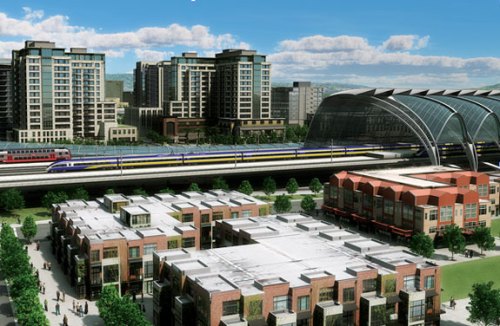The Pixar film “Cars” has this great scene, where we learn the sad history of small-town Radiator Springs. You probably remember it: the new interstate highway gets built, and all the shop owners expect it to bring lots of new customers. Instead the interstate causes all the traffic — and customers — to bypasses the town altogether. The town’s economy is decimated.
Radiator Springs may be a fictional place, but the story is all too real. And it gets repeated over and over again: Transportation agencies build new highway bypasses to “solve” traffic congestion on Main St.. The local business community at first welcomes the new highway, only to realize when it is too late that the bypass sucks the lifeblood out of downtown.
The latest case is Lincoln, California (population 42,000). Two days ago, a new bypass was opened around the city. The $325 million, 12-mile bypass will take some 40,000 cars around the city. It is Placer County’s most expensive transportation project ever. Eventually, the bypass will be widened to 4-lanes and made into a full-fledged freeway.
So how is the local business community responding to the new bypass, and lost business?
While interstates, elevated freeways and bypasses have been blamed for the economic decline of many a small-town Main Street, merchants and officials in the financially struggling city of Lincoln say they are excited to have their downtown back.
“It’s the best thing that has happened to Lincoln in years,” said Terrence Dorsey, who runs an investment business in the back of his wife’s clothing boutique on G Street, which takes the existing Highway 65 through town.
Well ok, but what about the experts at the world-renowned Mineta Transporation Institute? Surely they recognize the problem:
Transportation experts say a new bypass isn’t always the death knell for main streets. Reducing traffic creates an opportunity for a more people-friendly downtown, said Rod Diridon Sr., executive director of the Mineta Transportation Institute.
A 2006 study commissioned by the state Transportation Department agreed with Diridon’s assessment, finding that a bypass can lead to increased downtown business activity and other benefits.
Serious question: Has Rod Diridon ever been right about anything?


